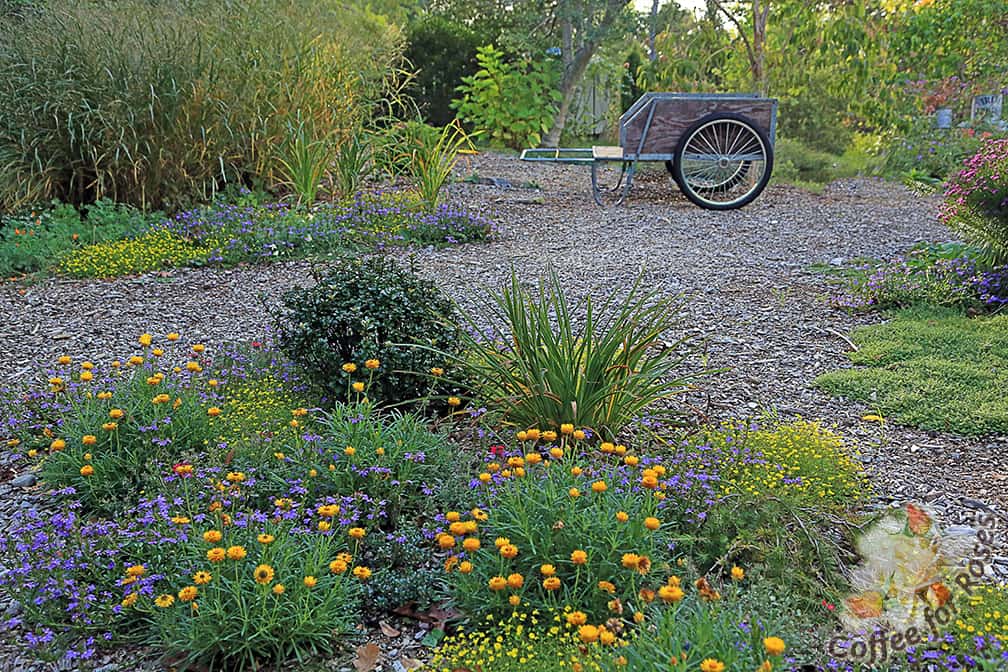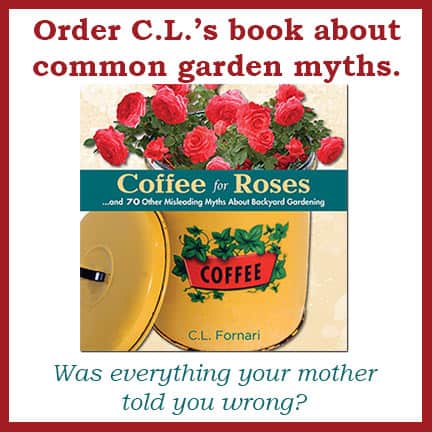If you have a dry, sunny area and want some easy summer-flowering annuals, here is a combination that worked so well for me last year. I usually like to plant annuals in a casual, natural style mixing three to five varieties mimicking how they might grow in nature. So I wanted three plants for this area that would be rather low, but not all completely low to the ground. I settled on three plants from Proven Winners and it was a great success.
I have a slope that’s between my driveway and the shed. This area is in sun for about 6 hours a day, and it’s a bit off my beaten track in terms of watering and general care. I’ve been working on getting some perennials and shrubs established here, but it’s a place where flowering annuals bring a lot to the garden party so I want to be sure to include a few drought tolerant selections every summer.
Knowing that it’s hard to kill Mecardonia GoldDust that was the first plant I knew would be in this area. GoldDust spreads low to the ground with bright green foliage. It is covered with tiny bright yellow flowers all summer. Best of all, if it goes dry and shrivels it responds to a good soaking by rebounding growth…you can almost hear it singing, “Thanks! I’m back!!”
Yellow and blue are a great combination in the garden, and the year before New Wonder Scaevola had done well in the area, so this was an obvious second choice to pair with GoldDust. The key to success with in-ground Scaevola is to clip off the ends of the long branches when you plant it, and again about three or four weeks later. This pinching prompts the plant to thicken as it grows outward.
For a third plant I wanted something that would be a bit taller and not as sprawling as the other two. Since the Sundaze strawflowers were taller and had a different growth habit, but are known to be drought tolerant, I thought that these would be the perfect mix with the Mecardonia and the Scaevola.
Like all annuals, I’ve also found that planting them with a combination of equal parts time-release fertilizer and an organic fertilizer provides the nutrition that supports new growth for the rest of the summer. So I use about a tablespoon of Osmocote Plus Outdoor and Indoor Smart-Release Plant Food, 8-Pound (Plant Fertilizer) combined with a tablespoon of Espoma PT18 Plant Tone, 18-Pound
. I scatter this mix in an area about 12″ in diameter on the surface of the soil where I’m going to plant my annuals, mix it in a bit with a Fiskars Big Grip Trowel (7073)
and place the plant in the center of this area. This mix of a synthetic fertilizer and an organic product feeds my annuals all summer long and I don’t have to think about it again.
Success! This combination bloomed beautifully, even though it was a very dry summer for us last year.




